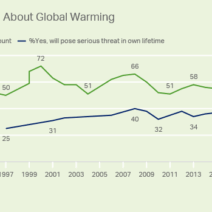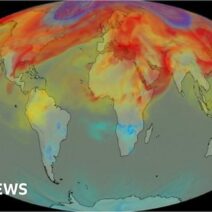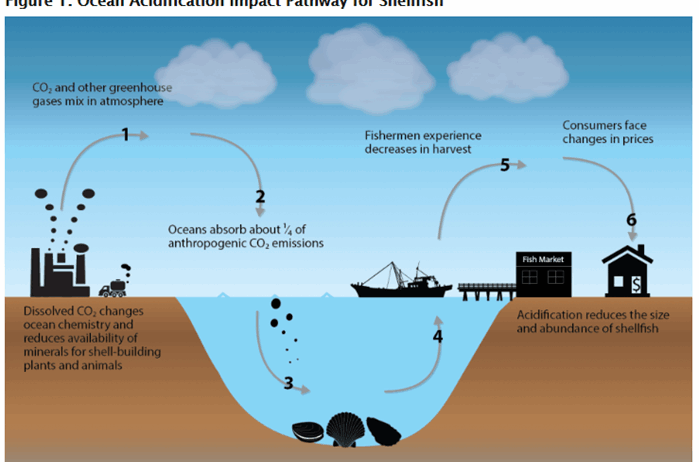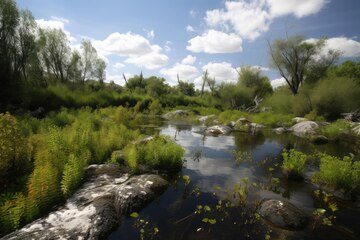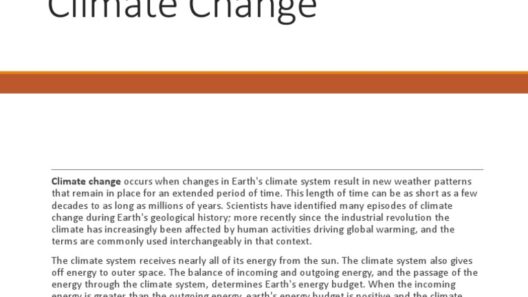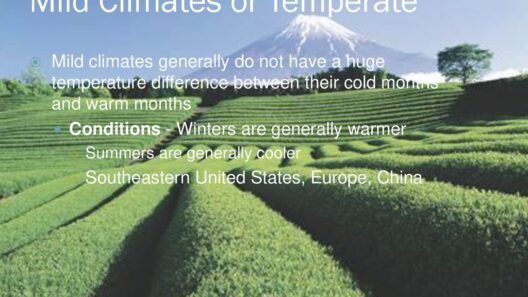Climate change is not merely an abstract concept; it is an encroaching tempest that permeates every facet of our existence. Its effects are manifold and pervasive, presenting an intricate tapestry of challenges that demand immediate recognition and action. As we delve into the depths of this critical issue, we will explore how climate change influences our oceans, disrupts agricultural practices, and poses a significant threat to food security. Intrigued? Without further ado, let us traverse this urgent matter.
The oceans, often dubbed the Earth’s lifeblood, are currently grappling with profound alterations as a consequence of climate change. Rising temperatures are causing ocean waters to warm— a phenomenon that not only affects marine biodiversity but also disrupts complex ecosystems. Coral reefs, often considered the rainforests of the sea, are succumbing to the scourge of coral bleaching, which is akin to a vibrant tapestry losing its hues. When water temperatures rise above a critical threshold, corals expel the symbiotic algae upon which they depend for survival. The resultant stark white exoskeletons reveal a calamitous decline in the health of these underwater cities, wreaking havoc on the diverse marine life they support.
The ripple effects of changing ocean temperatures extend beyond mere aesthetics. With the deterioration of coral reefs, we also witness the decline of countless marine species, many of which play crucial roles in the food web. Fish populations that flourish in vibrant reefs are dwindling, threatening the livelihood of communities that rely on fishing for sustenance. The vivid colors of coral reefs fade into shades of gray, reflecting a somber reality as entire populations of marine life slip into obscurity.
Moreover, increasing ocean acidification, another consequence of climate change, has significant ramifications for shellfish and other calcifying organisms. As the oceans absorb a greater quantity of carbon dioxide, the chemistry of seawater transforms, leading to more acidic conditions. This “unwelcome transformation” poses a threat to the very building blocks of the marine ecosystem, including mollusks and crustaceans, which struggle to form their calcium carbonate shells. Picture an artist attempting to craft a masterpiece using a crumbling canvas—this is the predicament faced by shellfish in acidifying waters. As their shells become thinner and more fragile, they are increasingly vulnerable to predation and environmental stressors.
The deleterious effects of climate change manifest not only in the oceans but also within the realm of agriculture, an area that directly impacts human sustenance. With shifting weather patterns and extreme climatic events, farmers are caught in a precarious balancing act, akin to tightrope walkers navigating an invisible fracture. Droughts, floods, and erratic temperature swings can decimate crop yields, rendering agricultural planning an exercise in futility.
For instance, regions that once thrived on staple crops such as wheat and corn find themselves grappling with unpredictable weather patterns. The age-old practice of farming, a dance of patience and resilience, is transformed into a gamble. The consequences extend beyond mere economics; food security is jeopardized, and vulnerable populations suffer the brunt of these disruptions. As the ground becomes parched, and crop yields diminish, communities are thrust into chaos, further exacerbating poverty and food insecurity.
Climate change intricately intertwines with the concept of food sovereignty, challenging the very systems that underpin global food supplies. The migratory patterns of pests and diseases, driven by rising temperatures, pose additional challenges to farmers trying to protect their crops. With pests unbound by geographic constraints, farmers find themselves ill-prepared to combat infestations. For them, the ideal of “growing what you know” becomes a distant memory as they grapple with unfamiliar adversaries.
Furthermore, the vulnerability of smallholder farmers, who lack the resources to adapt to these changes, cannot be overstated. They often represent the backbone of food systems in developing nations yet are relegated to the frontlines of climate-related turmoil. Limited access to innovative agricultural technologies exacerbates their plight. They are denied the opportunity to harness scientific advancements that could bolster resilience against climate variability. The metaphor of a ship adrift in turbulent waters aptly captures their struggle to survive amidst uncontrollable forces.
The repercussions of climate change permeate society in intricate ways, from distorted ecosystems to precarious food systems. It is imperative to recognize these effects as interconnected challenges that demand a holistic approach, much like a finely tuned orchestra that harmoniously produces a symphony. Each note—oceanic health, agricultural viability, and food security—must be acknowledged and addressed in concert to craft an effective response to the climate crisis.
In conclusion, the effects of climate change ripple through our oceans and agricultural landscapes, creating an intricate web of challenges that are bold yet often overlooked. As stewards of the planet, it is incumbent upon us to confront these realities with unflinching resolve. The time for action is now, for it is not merely an environmental issue; it is an existential one. As we stand at this crossroads, the choice before us is whether we shall rise to the occasion and mitigate the effects of climate change or allow the tempest to sweep away our fragile ecosystems and the irreplaceable resources they provide. The future hinges on our willingness to forge a sustainable path forward, for ourselves and for generations yet to come.
